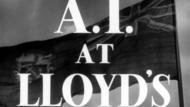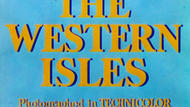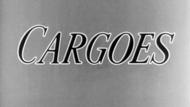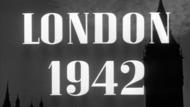About the film
The various docks of the River Thames, the precautions being taken during the war, and the markets of London.
Details
- Release year
- 1940
- Director
- Andrew Buchanan
- Production company
- British Films Ltd
- Producer
- Andrew Buchanen
- Cinematographers
- Henry Cooper, Horace Hughes
- Editor
- James Anderson
- Running time (minutes)
- 10 mins 22 secs
Original Description
The River Thames, Key to London’s Importance as a Centre of Commerce and Government
'At Tilbury, near the mouth of the River Thames, liners from all over the world come into the landing stages, past long lines of barges and battalions of cranes. Higher up-river are the giant London docks, the busiest in the world, where the work of importing and exporting cargo us carried on unceasingly.
Westwards, up-river, are huge warehouses; cranes and smoking funnels line the banks. Approaching the City, ships pass beneath Tower Bridge, close to the imposing Tower of London. Nearby is the world of wharves and dockland offices, and directly linked to the river are London's famous markets - Billingsgate for fish, Smithfield for meat and Covent Garden for fruit, vegetables and flowers. Here, too, is the world of finance - "the richest square mile in the world" - with the Stock Exchange, the Bank of England, and important banking and business houses known throughout the world. Further up-river is County Hall, magnificent headquarters of the London County Council; and on the left bank is the historic City of Westminster, home of the Empire's government; lining Whitehall are big Government departments and, nearby, Westminster Abbey; and on the water's edge, the Houses of Parliament with their elaborate and beautiful architecture. Beyond Westminster the character of the river is changed yet again, and giant Power Stations give way to residential houses, roads to gardens. Beyond Richmond, with its willow-lined banks, are the Tudor chimneys and turrets of Hampton Court; higher still is Windsor and its Castle, the home of the King.
As evening falls there is peace on the river at Windsor, but at the mouth of the Thames activity goes on into the night. There is no sleep for the greatest port in the world.'
(Films of Britain - British Council Film Department Catalogue - 1940)
Trivia
- Viewable at 01:14 is the S.S. Egyptian Prince - Built in 1922, this ship survived the war and was ultimately broken up in 1960. It notably was a part of the Convoy HG 53 where it carried oranges from Gibraltar to Liverpool.
- Viewable at 03:02 is the S.S. Calderon - Built in 1919, this cargo ship was sunk near Egypt on May 2nd 1942 after being attacked from the air; it caught fire and exploded.
- Viewable at 04:30 is the S.S. Laconikos - Built in 1914, this ship was a Greek passenger and cargo steamer. It was torpedoed by submarine U-89 on 7th May 1943 400 miles west of Vigo (Portugal) whilst carrying Manganese ore from Freetown (Sierra Leone) to Ardrossan (Scotland). It sank in under a minute, and the lives of 23 crew were lost.







